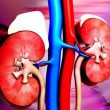Courtesy of Dr. Carlos Fava. Transcatheter aortic valve replacement (TAVR) was developed for aortic stenosis, but there is a significant number of patients with severe aortic regurgitation who still undergo this procedure as an off-label indication. Current evidence for this procedure in relation with this disease is growing, mainly due to good results obtained by different...
Invasive Strategy in Frail Patients Is Safe
Courtesy of Dr. Carlos Fava. The current population of frail and elderly patients is increasing, and while non-ST-segment acute coronary syndrome (NSTEACS) guidelines recommend early invasive treatment, this group has been excluded from most studies on the subject. Current information on its efficacy is controversial but agrees with the notion that this is a higher-risk group...
Should Sex Be Taken into Account with Left Main Coronary Artery Revascularization?
The EXCEL trial did not find the sex of patients with left main coronary artery disease to be an independent predictor of adverse events after revascularization. However, women who underwent angioplasty had a trend towards worse outcomes, a finding that might be related to comorbidities and somewhat increased chances of peri-procedural complications. In its formal...
FFR vs Angiography Guided CABG
In the daily practice and in randomized studies such as Syntax or Freedom, most cardiovascular surgeons across the world use angiography guided CABG to teat 50% coronary stenosis. Many of these lesions might not be functionally significant. There is abundant evidence in favor of fractional flow reserve (FFR) guided PCI, but FFR guided CABG is...
First Results for Ticagrelor in Elective Coronary Angioplasty
This is one of the first studies on the use of ticagrelor in patients with stable coronary arteries who undergo elective angioplasty. Although its number of patients is low and its endpoints are soft, this work at least provides some support to what is already happening in daily clinical practice. Many patients admitted for a...
Great Dispersion in the Prognosis of Patients with Angina and No Coronary Lesions
The prognosis of patients with symptoms of angina (with all their subjectivity) in a setting of no significant coronary lesions is widely varied. It is not as benign as we initially thought and patients do not present as many events as “regular” patients with associated severe coronary lesions. The literature owed us data on the...
The Crucial Significance of Lifestyle Changes
Any change towards a healthier lifestyle, even if it seems small, can have a great impact, particularly in patients with diabetes. These changes are never too late. In consequence, as physicians, we should always be attentive and never stop encouraging patients to adopt them. Patients with diabetes who make changes to their lifestyle, such as...
Urgent/Emergent TAVR: A Valid Option
Courtesy of Dr. Carlos Fava. Aortic stenosis with cardiac failure or cardiogenic shock involves high mortality risk at short term. Surgery in these conditions is often unsafe, which leaves us with valvuloplasty, but only as a bridge to some other procedure, seeing as it is effective only for a short time. Few studies have looked into patients undergoing...
Renal Impairment: How Does It Affect Angioplasty and Surgery?
Courtesy of Dr. Carlos Fava. The incidence of kidney disease is increasing. In its final stage, this pathology is related with coronary disease and increased mortality. Furthermore, we know that, in many occasions, it is associated with diabetes. Nowadays, the evidence comparing the progress of patients with impaired kidney function who have undergone left main...
More Bad News on Bioresorbable Scaffolds
A year after the implantation of everolimus-eluting bioresorbable scaffold Absorb 1.1, optical coherence tomography (OCT) scans showed neointima formation covering plaque without significant luminal loss. At 5 years, the device is supposed to disappear completely, potentially thrombogenic plaque components are supposed to be covered by endothelium, and the vasomotor function is supposed to be recovered. However, there...









